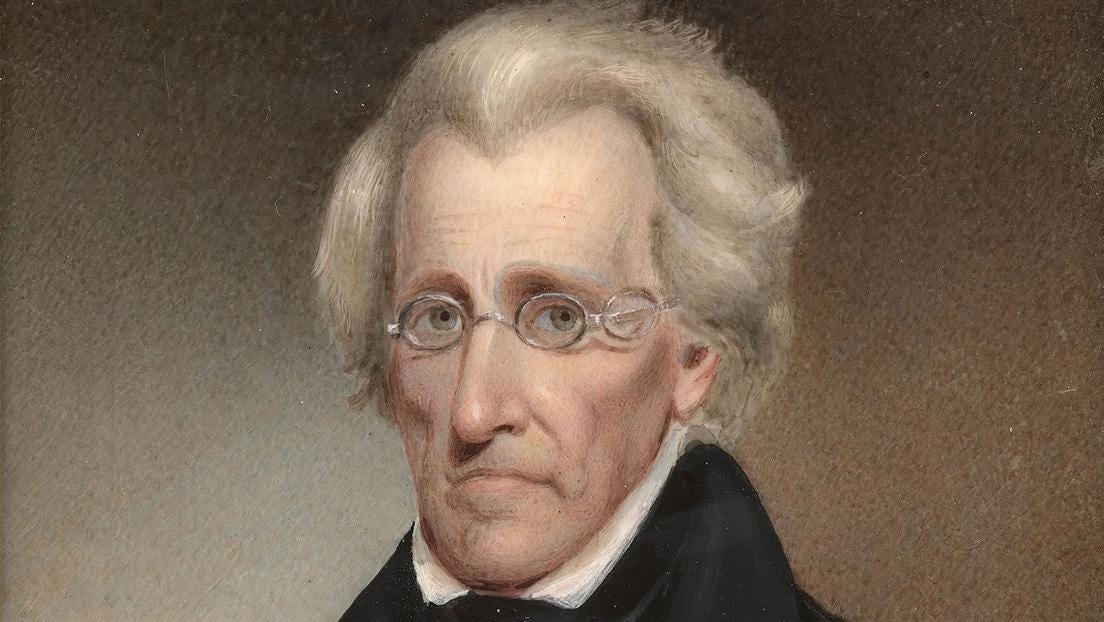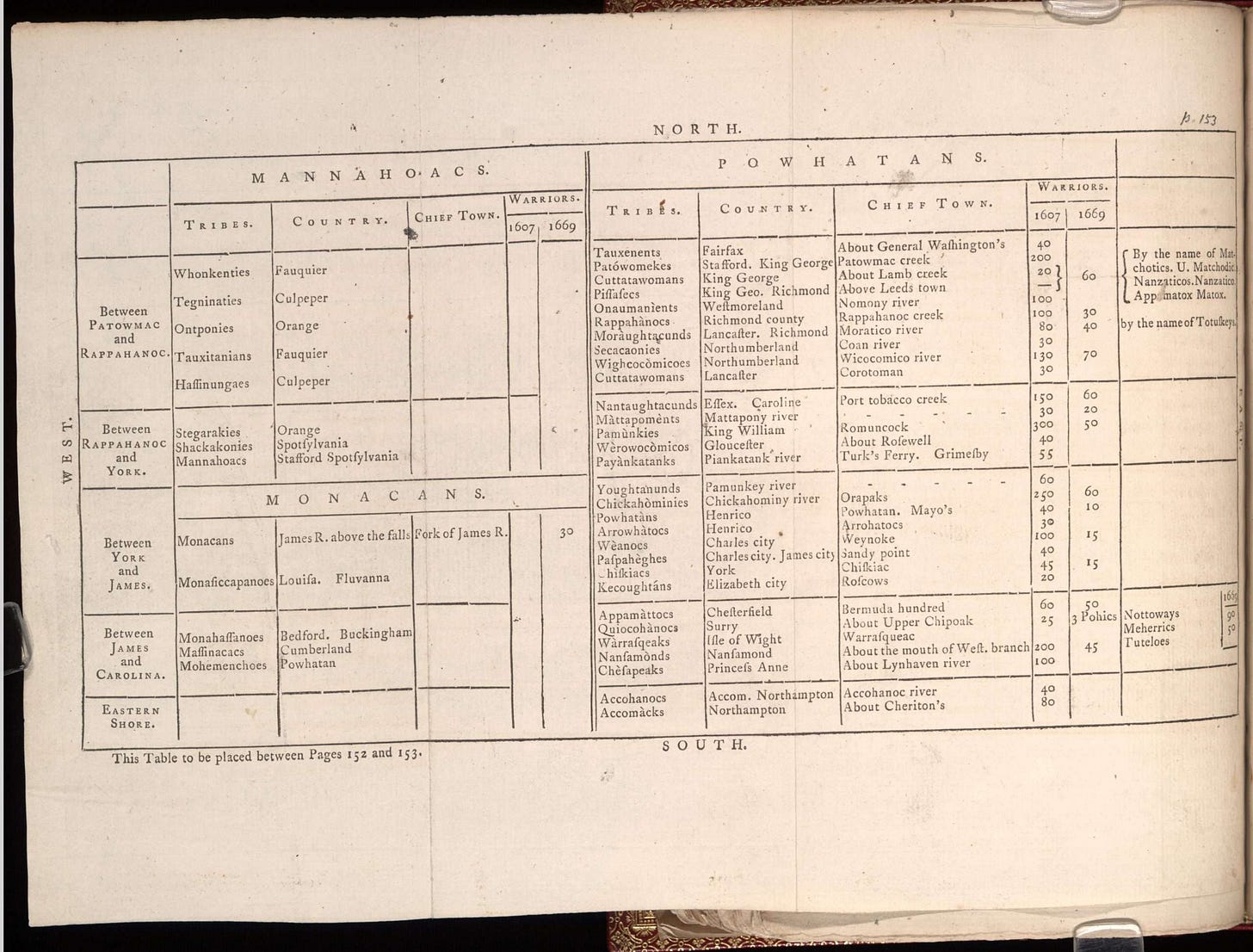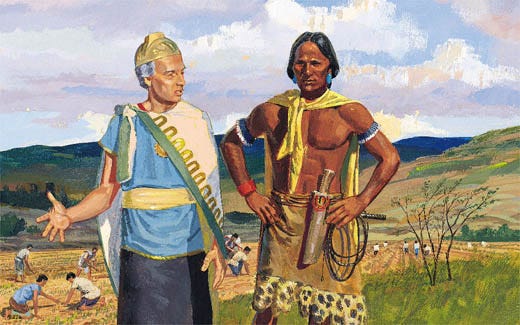Best of: Who Killed the Mound Builders?
When policy is justified by myth, it can lead to brutal consequences.
I had hoped to return to new posts this week, but unfortunately a technical error with Substack caused my draft and all its notes to be deleted, so I was not able to complete the piece in time. Fortunately, it seems the error has been resolved, so I will be publishing that new piece next Sunday. In the meantime, this particular post is a perfect substitute, as both deal with Thomas Jefferson and potentially surprising habits of thought from the early 19th century.
Apologies again for another re-post. Thank you for your patience and continued readership. Your support during this very busy time has really meant quite a lot.

In the early 1750s, plantation owner Thomas Jefferson observed Monacan Native Americans holding a ceremony on an earthen mound near the Rivanna River north of Charlottesville, Virginia. Over the next 30 years, on top of some other business, Jefferson would compile these and other findings into what is considered the “first example of scientific archeology in the United States.”
These mounds, which were found in a large swath of territory from the Piedmont to the Shenandoah Valley to the Blue Ridge Mountains, were widely known by other armchair scientists and proto-archeologists at the time, and prevailing theories about their origins were as bizarre and racist as the people making them. For example, Ezra Stiles (1727–1795), who built a museum of stolen indigenous artifacts and remains that was once housed at Yale university, was under the laughably incorrect notion that indigenous languages were descended from Hebrew and that the Mound Builders were the “lost tribe of Israel.”
These themes would have echoes in the following century. Even as Jefferson’s amateur archeology would counter such bizarre theories and increase the evidence behind indigenous origins in America, his policies as president would instigate the systematic displacement of Native Americans. Andrew Jackson, who would expand on these policies to genocidal proportions, defended his infamous Indian Removal Act of 1830 by arguing that because “a once powerful race” was wiped out “to make room for the existing savage tribes.” White Americans now had the moral justification to remove existing Native Americans from the Southeast, whereupon they founded more plantations and imported more African slaves to farm cash crops like tobacco and, increasingly, cotton.

The same year that the Trail of Tears was launched, Joseph Smith wrote the Book of Mormon, which depicts a “lost tribe of Israel” that migrated from Jerusalem to America in about the year 600 BCE, dividing over time into white-skinned farmers and red-skinned marauders. The latter, naturally, murdered the former. The Mormon would church go on to hold the doctrine that black and brown skin is a curse from God until 2013.
The myth that the Mound Builders were a lost civilization of superior White elites living in a Garden of Eden until “the red man came” persisted, and these hostile, anti-indigenous origin myths would continue to be used to justify the genocide of Native Americans throughout the 19th century:
As the United States pushed into ever more “Indian territory,” a myth of a white “Mound Builder” race emerged from the Lost Tribes idea. The Mound Builders were supposed to have been overrun. This myth rationalized land-grabs, removals, and genocidal wars, because “if Indians killed a white race, the white race was justified in killing or removing them.”
Despite White Americans having colonized nearly the entire continent, the birth rate projection — a natural conclusion of social changes brought on by industrialization and constant immigration from the south — shows that White people are en route to being a minority population. Turns out most people see this as neither good nor bad. However, a theory that smells a lot like the 19th century has gained significant traction in far right circles and is increasingly aired in the mainstream political dialogue.
Last week, U.S. Congressman Jeff Van Drew went on a tirade full of talking points from the “great replacement” theory, which posits that there is an intentional effort to replace White Christian Americans with - you guessed it - non-White non-Christian non-Americans.
Whereas the original “great replacement” theory is attributed to a French bigot afraid of Muslims from North Africa, the American variation typically involves Latinos (they usually counter the reality that they are overwhelmingly Catholic by tossing in the occasional Muslim from North Africa). But the theory is virtually identical to the old ones. Latinos even have a significant and diverse indigenous heritage; far more than what the Scots-Irish and WASPs typically claim. So once again, it’s actual indigenous people “wiping out” white-skinned “natives.”
So really - as usual - it’s the same shit, new century. The modern theories now are as equally unfounded in reality as the old ones, and just as racist. At the end of the day, they’re also far too simplistic. As I said in last week’s post, demography is complex, and heritage more dynamic and fluid than typically conceived. You just can’t simplify an entire culture down to one race or ethnicity, and those that try usually end up trying to murder those they consider different. The truth of the matter is that humanity is a lot more complex. Things just aren’t so black and white.






